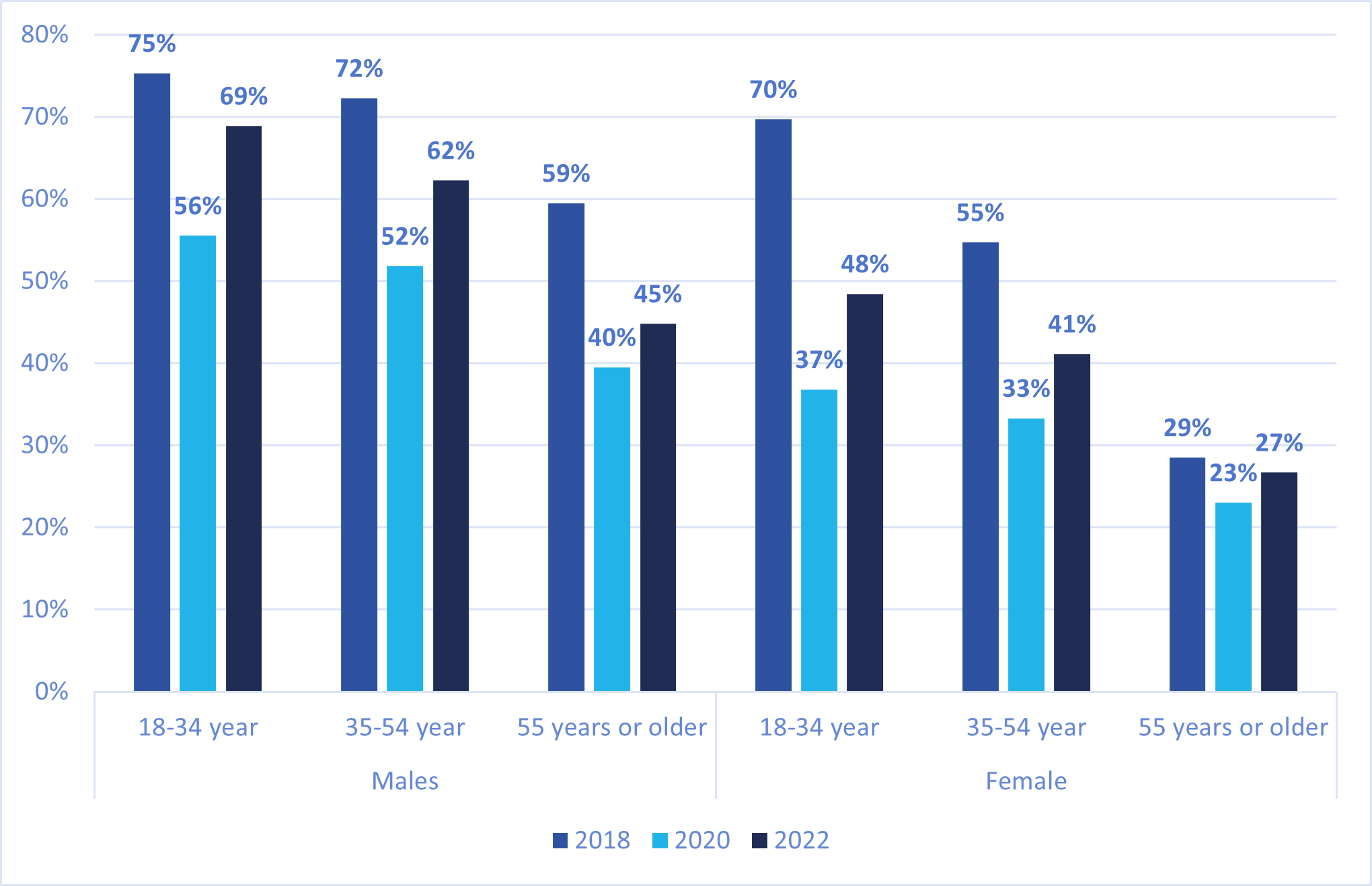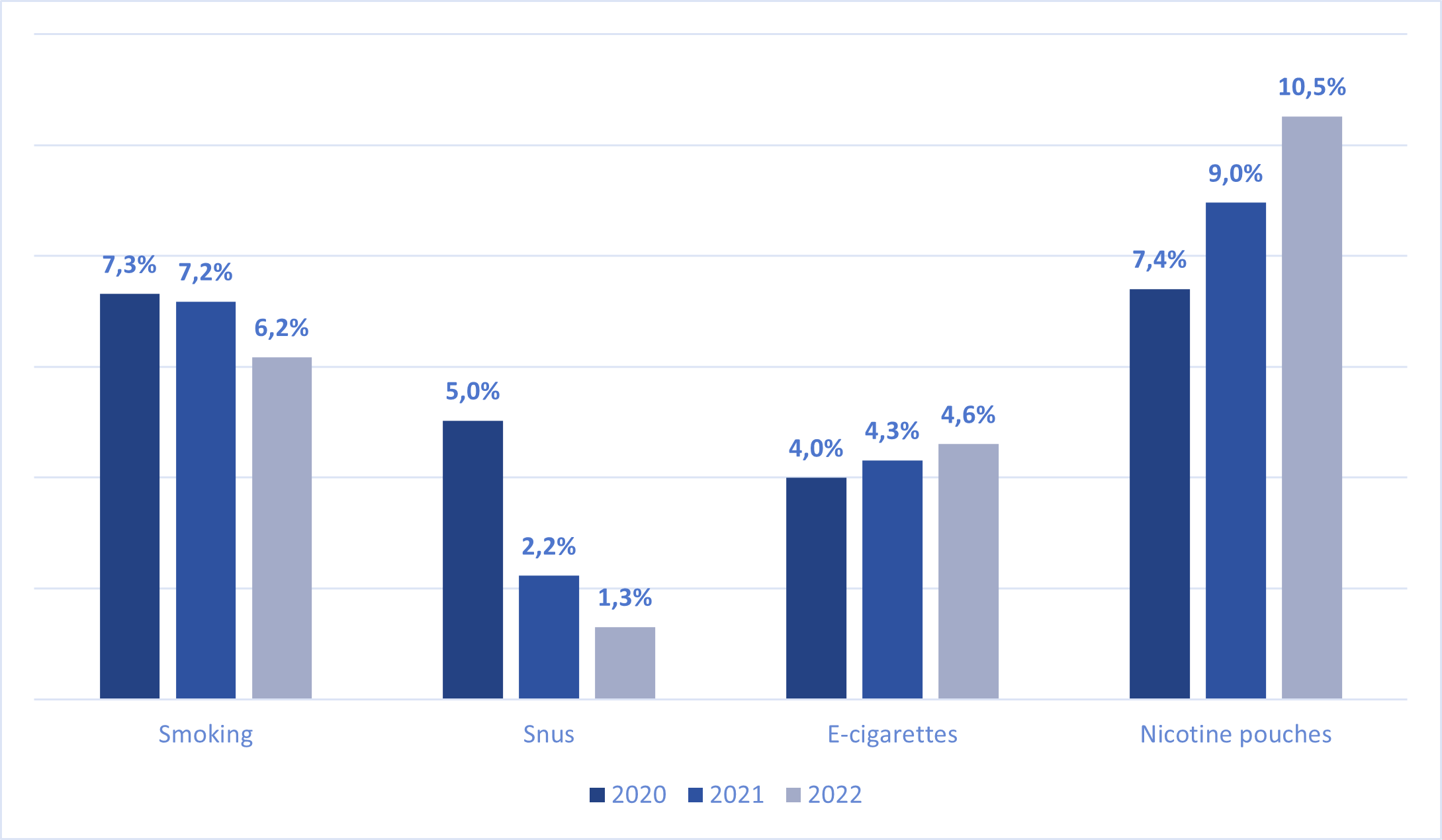Alcohol and Tobacco Use in Iceland – where are we heading?
Alcohol, TobaccoSveinbjörn Kristjánsson, Rafn M. Jónsson & Viðar Jensson Published 22 Mar 2023
The Directorate of Health in Iceland monitors several determinants of health every year ever since 2014. In this article we compared the use of alcohol in the adult population over a five-year period from 2018 to 2022 and the use of tobacco along with e-cigarettes and tobacco-free nicotine pouches. When interpreting the data, it should be considered that the social restrictions that existed between 2020 and 2022 due to the pandemic had a major impact on people’s daily lives.
In the year 2022, almost a quarter of Icelanders fell under the definition of having a harmful consumption pattern of alcohol, or risk consumption (27 per cent of men and 21 per cent of women 18 years and older). In 2021, the ratio was 25 per cent among men and 20 among women. The definition is based on three surveys questions. These are; whether or not you drink, frequency of binge drinking and number of units when drinking.
The results show similar trends in monthly binge drinking as, for risk consumption. The percentage of binge drinking was at its highest point in 2018, dropped considerably in 2020, but has increased again. Proportionally more men than women get drunk every month. In 2020 49 per cent of men got drunk once a month, compared to 58 per cent in 2022. The percentage of women who got drunk in 2020 was 31 per cent, compared to 38 per cent two years later.

In 2022, more than two out of three men, aged 18-34 years, got drunk once or more in the past 30 days. The same was true for almost half of women in the same age group. In 2022, the percentage of those who get drunk once or more a month has increased and is approaching the same level as before the pandemic hit, especially among men. Binge drinking decreases with increasing age (Figure 1).
Tobacco use and other novel tobacco products
Considerable changes have occurred in recent years in the use of tobacco and other nicotine products, in Iceland as well as in the other Nordic countries. The use of nicotine pouches has increased significantly in recent years and has become the most common form of nicotine consumption in Iceland. The use of nicotine pouches is most prevalent among young people, while smoking has decreased significantly. Smoking is most prevalent among older age groups.
Many countries have set the goal of reducing daily smoking among adults to less than 5%. As smoking is measured low among younger age groups, it is likely that this goal will be reached in Iceland soon, as daily smoking among adults is currently measured at around 6%.
Alongside smoking, also the oral tobacco use has decreased substantially. There is an increase in the use of nicotine pouches and e-cigarettes during the study period (figure 2).
The use of snus (nasal tobacco) has decreased rapidly in recent years and the low price of nicotine pouches compared to snus-prices may have played a role in this trend. The use of e-cigarettes increased among women in the younger age group during the study period. Daily use among 18 to 34 year-olds went from 6.6 to 9 per cent, but decreases among men, from 8 to 6 per cent.

To reduce the harmful effects of alcohol, tobacco, and other nicotine products, it is necessary to implement effective and impactful measures based on government policy with public health as a guiding principle, and to protect against the influence of market. Examples of such measures include effective taxation, restrictions on access such as state monopoly on retail sale of alcohol, and age limits on the purchase of alcohol, tobacco, and other nicotine products, as well as extensive limitations on marketing.
This article is written by
Sveinbjörn Kristjánsson, Behavioral Specalist
Rafn M. Jónsson, Project manager &
Viðar Jensson, Project manager
on the request of PopNAD


